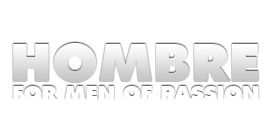
 Would you like to have greater physical energy in your life? There is a simple formula called the “Three B’s” formula for greater physical zest. This is a proven formula that can be used every day to have incredible levels of personal energy.
Would you like to have greater physical energy in your life? There is a simple formula called the “Three B’s” formula for greater physical zest. This is a proven formula that can be used every day to have incredible levels of personal energy.
1. BALANCE
Balance represents the body’s constant attempt at equilibrium. The more you can aid that equilibrium in key areas, the healthier and more vital you will be. There are two very important areas to achieve equilibrium.
pH Balance: Alkaline – Acidic
pH Balance represents the alkalinity or acidity in the blood stream. The SAD (Standard American Diet) of fast foods, processed foods, red meats, etc. produces an acidic blood stream. This is not healthy for blood cells and will affect energy and mood. The body needs foods like green leafy vegetables and plenty of water to become more balanced and alkaline. The body also needs plenty of sleep. This simple shift alone (to a more alkaline diet) could produce huge changes in overall health and energy. A simple practice of at least one or two salads a day and a glass of water every hour or two will make a huge difference in people’s lives.
Blood Sugar Balance: Insulin – Glucagon
The Blood Sugar balance is incredibly important for health and longevity. We all know what it’s like to devour a huge desert, have an energy spike or “sugar high” before crashing half an hour to an hour later. What we are feeling when this happens it the imbalance in blood sugar. At first simple sugars flood our blood stream and make us feel “high” but the sugar overload imbalances the system and to counteract the imbalance the body releases insulin.
A little sugar is okay if you are exercising because your body will immediately burn up the simple fuel – like a fire consuming highly flammable kindling wood. But the combination of too much sugar in the system and not enough physical activity to burn it up in time causes the body to send out Mr. Insulin to go out and gather the kindling wood and bind it all together into thick “wood piles” known as fat. These “wood piles” will be stored as fuel for another day. But if you never let the body truly balance it’s blood sugar, or burn off the existing wood piles through physical activity – it will continue to stock pile them into a condition known as being overweight or obese. So the key points here are – only eat deserts if you plan on doing some kind of physical activity afterward, or give your body plenty of time (days) to balance out its blood sugar levels before you indulge in another snack.
Key lessons for balance:
1) Eat multiple green leafy salads a day
2) Have a glass of water every 1 to 2 hours
3) Get plenty of sleep
4) Have a sweet day only once or twice a week.
5) Do physical exercise right after eating sweets or lots of carbs.
The body needs food for one of two reasons – the production of energy or the building and repair of the body. That’s it. That’s all it uses food for. Now you may eat it because it tastes good, but all your body cares about is how the food can be used for burning (energy) or building (healing/repairing/making the body stronger).
2. BURN
When it comes to the production of energy, there are two primary forms of fuel, carbs and fats:
Carbs fit into one of two categories – simple or complex. Simple carbs just mean they have a shorter chain of molecules and so they are burned in the fires of metabolism faster than complex carbs. Just imagine a short stick versus a long stick. The shorter the stick, the faster it gets burned up in the fire to produce energy. Sugar rich snacks and candy are examples of simple carb foods. Potatoes and whole breads are examples of more complex carb food.
Fats – which are more like the wood piles or even big tree logs that take even longer to break down and be used as fuel. Fat contrary to popular belief, is not the enemy. The body sees fat as a great long term fuel source that can be stored for a much longer time than carbs. That’s why if the body is flooded with carbs, rather than dispose of them – it holds onto them in the form of fat. The body has evolved for millions of years in times of feast and famine. It doesn’t want to dump a potential fuel source because based on the history of human evolution over millions of years – it never knows when you will be able to eat again. Fat storage is an ancient survival strategy of the body that has worked for its survival over many generations.
Key lessons for burn:
1) Eat less (especially simple sugars / short sticks)
2) Exercise more (especially if you’ve just eaten simple sugars / short sticks)
3. BUILD
When it comes to the building, repairing and strengthening of the body the primary building block is protein. In fact you can determine the priority of carbs, fats and proteins by how the body uses them when in starvation mode. Most of the Carbs in the blood stream are used up within a day or two. Then the body shifts to breaking down and consuming the fat storage. The metabolism will slow down and consume fat for weeks, doing its best to preserve as much protein as possible. Although over the course of around 30 days some protein is broken down to feed the brain. After about 30 days when the body has run out of fat reserves it will begin consuming the protein and at this point it begins to cannibalize itself. Major organs go last and that’s when the body shuts down -the body literally eating itself to death.
If proteins are the last to go, it stands to reason that they are also the most important part of any diet. Proteins are found in variety of animal and dairy products like meat, eggs, fish, cheese etc. The body requires what are known as the nine essential amino acids (types of proteins) in order to function at optimum health. If it’s only getting some of the essential Amino acids, health problems may arise. You can get all of your essential amino acids from fish, chicken and eggs without the side effects of cholesterol found in red meat. Of course the environment that the meat or dairy you consume was raised is an important factor to consider. It’s also possible to get essential amino acids from an all vegetarian diet alone (through a variety of beans, nuts, etc) however it can be a more difficult thing to do, requiring careful diet planning.
How much protein is enough? Expert estimates vary – anywhere from .25 grams to 1 gram per lb that you weigh. So a 150 lb adult should consume anywhere from 32.5 grams on the low side to 150 grams on the high side. There is no definite number – you should observe your body and notice how you feel. When you are getting enough protein your muscles will be well fed and you should feel strong. Of course if you’re body building you know the importance of adding a good deal of protein to your diet before and after a work out. Some body builders consume 2 – 4 grams of protein per lb that they weigh. Doctors caution against high protein diets as potentially being toxic to the blood stream (acidic). This is where all the factors come together. You must not give too much weight to burning or building without also considering pH Balance and Blood Sugar. I refer to this consideration of other factors as Timing.
Key lessons for build:
1) To be sure the body is building in a proper fashion, make sure you’re getting enough protein
2) You’re eating a diverse enough range of proteins
3) You’re getting all the essential amino acids or building blocks for your body’s strength and repair
Timing
When it comes to timing there is a simple rule: feed according to need. In other words, don’t just eat simply because its time to eat. Eat because you are either supplying your body with greater energy for the task at hand or the necessary building blocks for strengthening and repairing. If you live a sedentary lifestyle where you sit most of the time and you have no desire to exercise, perhaps the most important thing you can do for your health is EAT LESS! But if you want to eat more, time to take up an exercise regimen or sport you enjoy.
Another thing to consider about what you eat is – why do you eat it? Your reasons for eating will help you understand why you are in the condition you are in today. Here’s an example of a few values that drive eating behavior:
You eat whatever tastes good.
You eat whatever is most convenient.
You eat whatever makes you feel the best.
You eat based on what will help you live the longest.
People that eat food because it tastes good or because its convenient generally have more health problems than people who eat food because it makes them feel the best or live the longest. Like most things in life, a longer time perspective helps you make better long- term decisions.
Of course no one diet or exercise plan fits all and the Triple B formula for physical zest is only a guideline for determining the best diet approach for you to achieve the maximum balance, burn and build relative to whatever you are doing in your life and what your goals are (timing). Take some time after you finish this article to consider how you can use the Triple B formula to live a healthier, happier life.








